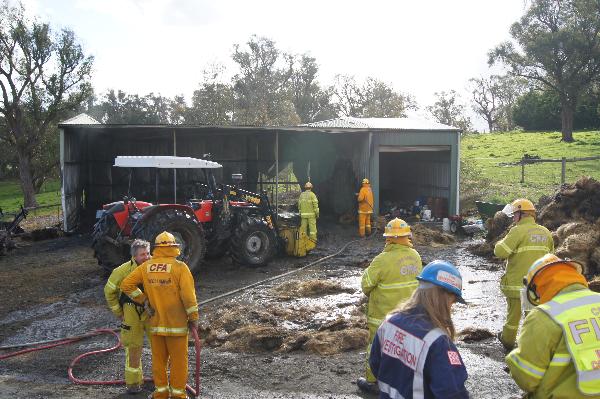HAY will heat for a number of reasons but the most common reason is free moisture being present on the windrows during baling.
This moisture may be from heavy dew overnight, sections of the windrow, often the bottom of a heavy windrow, not being cured enough, or rain-affected windrows not being given sufficient time to dry prior to baling.
Heating also occurs when plants are not cured enough therefore their internal cell moisture is too high at baling.
Heating may also occur if there is moisture build up on the outside of the bales.
This can occur when there have been heavy rains after baling allowing water to soak into bale exteriors for several centimetres.
If the bales are stacked before being allowed to redry, evaporating moisture may become trapped in the stack and generate heat as a result of bacteria and mould activity.
Plant respiration, mould, fungi and bacterial activity all contribute to the generation of heat in damp hay.
When temperatures reach 43-66°C, heat-resistant bacteria thrive, increasing the temperature.
As the microbes die off at 70°C, exothermic chemical reactions take over, pushing temperatures above 100°C.
At this stage temperatures can rapidly increase to the point of spontaneous combustion which is roughly 170-180°C.
Combustion may occur within two weeks of baling and may continue to pose a threat for three to four months afterwards.
Heat damage prior to combustion appears as brown or charred hay in the middle of the bale.
Heating and danger of combustion is greatest with large rectangular bales, followed by large rounds, then small rectangular bales.
Signs that the bales of hay are heating include:
* steam rising from the haystacks;
* condensation under the hay shed roof;
* mould growth in or on bales;
* unusual odours – burning, musty, tobacco or caramel smells;
* or slumping of bales in sections of the haystack.
Monitor haystacks using the crow bar method.
Push a crow bar well into the stack or suspect bale.
Leave it for about two hours, extract it and touch it. If the crowbar is too hot to hold, then action is required.







